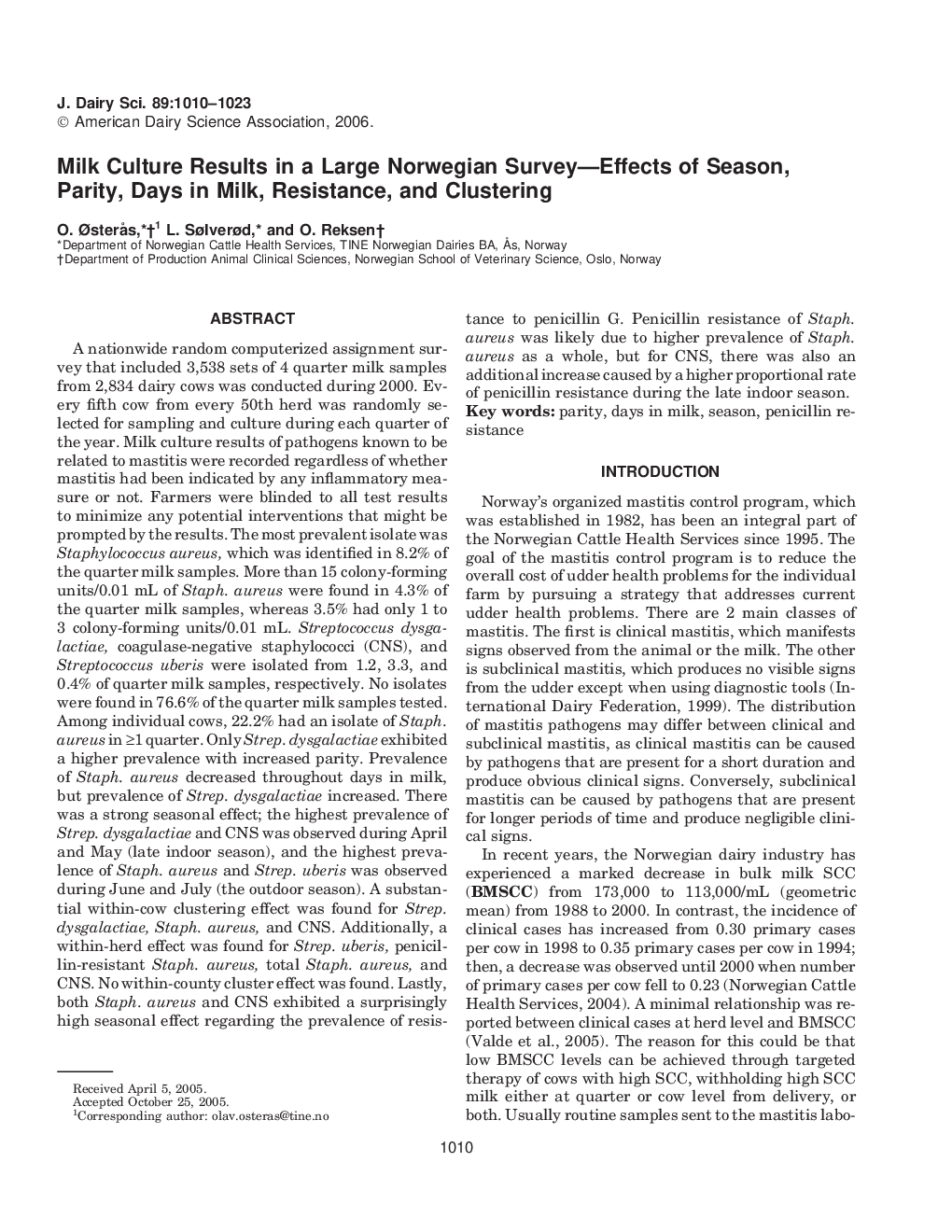| Article ID | Journal | Published Year | Pages | File Type |
|---|---|---|---|---|
| 2441633 | Journal of Dairy Science | 2006 | 14 Pages |
Abstract
A nationwide random computerized assignment survey that included 3,538 sets of 4 quarter milk samples from 2,834 dairy cows was conducted during 2000. Every fifth cow from every 50th herd was randomly selected for sampling and culture during each quarter of the year. Milk culture results of pathogens known to be related to mastitis were recorded regardless of whether mastitis had been indicated by any inflammatory measure or not. Farmers were blinded to all test results to minimize any potential interventions that might be prompted by the results. The most prevalent isolate was Staphylococcus aureus, which was identified in 8.2% of the quarter milk samples. More than 15 colony-forming units/0.01 mL of Staph. aureus were found in 4.3% of the quarter milk samples, whereas 3.5% had only 1 to 3 colony-forming units/0.01 mL. Streptococcus dysgalactiae, coagulase-negative staphylococci (CNS), and Streptococcus uberis were isolated from 1.2, 3.3, and 0.4% of quarter milk samples, respectively. No isolates were found in 76.6% of the quarter milk samples tested. Among individual cows, 22.2% had an isolate of Staph. aureus in â¥Â 1 quarter. Only Strep. dysgalactiae exhibited a higher prevalence with increased parity. Prevalence of Staph. aureus decreased throughout days in milk, but prevalence of Strep. dysgalactiae increased. There was a strong seasonal effect; the highest prevalence of Strep. dysgalactiae and CNS was observed during April and May (late indoor season), and the highest prevalence of Staph. aureus and Strep. uberis was observed during June and July (the outdoor season). A substantial within-cow clustering effect was found for Strep. dysgalactiae, Staph. aureus, and CNS. Additionally, a within-herd effect was found for Strep. uberis, penicillin-resistant Staph. aureus, total Staph. aureus, and CNS. No within-county cluster effect was found. Lastly, both Staph. aureus and CNS exhibited a surprisingly high seasonal effect regarding the prevalence of resistance to penicillin G. Penicillin resistance of Staph. aureus was likely due to higher prevalence of Staph. aureus as a whole, but for CNS, there was also an additional increase caused by a higher proportional rate of penicillin resistance during the late indoor season.
Related Topics
Life Sciences
Agricultural and Biological Sciences
Animal Science and Zoology
Authors
O. ÃsterÃ¥s, L. Sølverød, O. Reksen,
